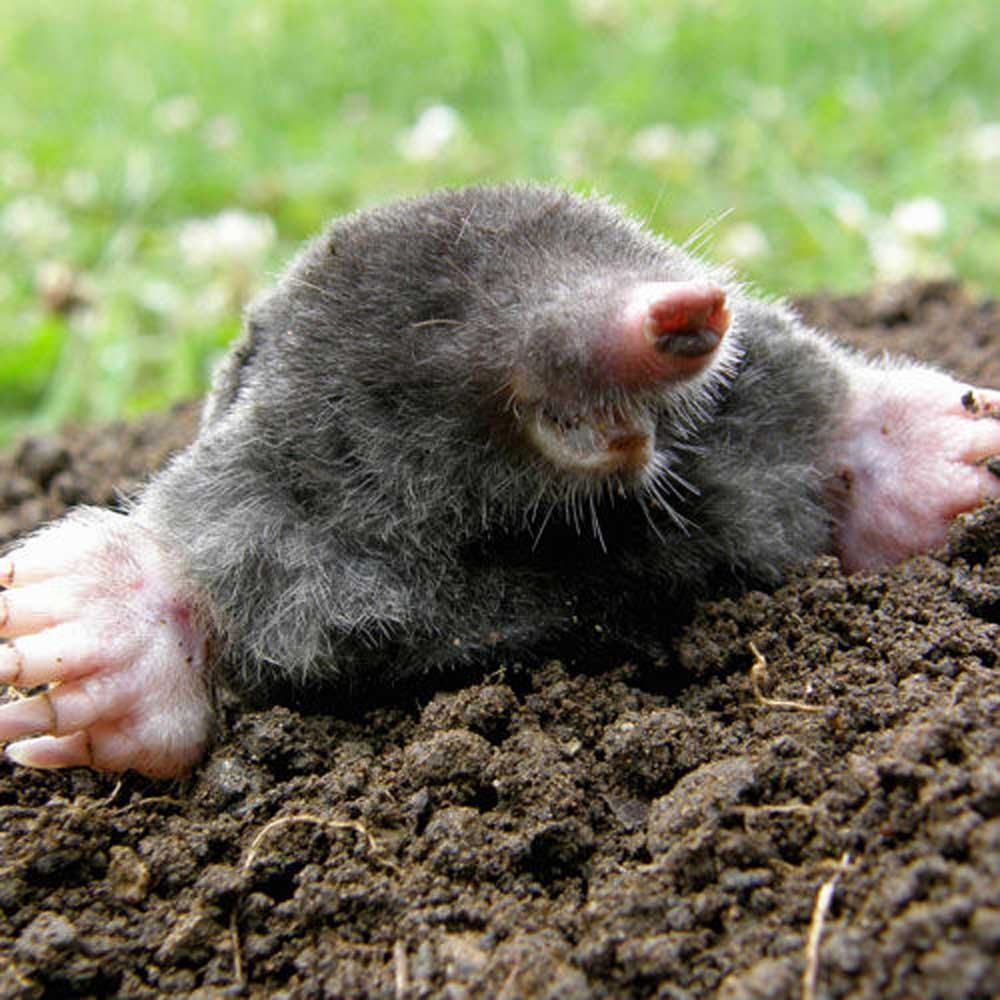Master Gardener: Making a mountain out of a mole hill
Published 8:30 pm Tuesday, June 14, 2022

- Eastern mole
Moles have wreaked more havoc on my garden and yard than any insect or plant disease. Their mounds and tunnels not only lead to an unsightly yard, but their burrowing often disrupts the root systems of my plants either killing the plants or causing nutrient deficiency. If you see mounds of soil and raised ridges in your yard, you may well have a mole problem.
Moles are mammals that feed primarily on insects. They swim through the soil with their clawed, paddle shaped feet searching for earthworms, grubs, ants, and other subsurface dwelling insects. They are small animals, only 6 to 8 inches long and weigh 3 to 6 ounces. Moles have small eyes and are nearly blind. Their amplified tactile sense allows them to respond to vibrations in the earth and to recognize foreign objects within their tunnels. There are several species of moles in the United States, but according to Texas A&M AgriLife Extension Service the only known species in Texas is the Eastern mole (Scalopus aquaticus).
A mole has a complex tunnel system that often incorporates an acre or more. Their burrowing separates plant roots from the soil. The severed roots can create a yellowing pattern of dying grass in a yard. The mole’s shallow tunnels have a mushy or soft feeling when stepped upon. Their network of burrows includes miles of tunnels. Some of the tunnels are very near the surface, but other tunnels may be as deep as 12 to 18 inches. The shallow tunnels are often used when searching for food, while the deeper tunnels are highways to nesting sites and retreats from extreme cold or heat.
Controlling moles is not easy. There are many suggested remedies for reducing mole populations. One of those methods includes using insecticides to kill the grubs that are a predominant food source for the mole. Soaking tunnel areas with a mix of castor oil and dish soap is another suggested remedy. One anecdotal solution to a mole problem includes placing noxious or sharp objects within their tunnels. A less often mentioned method of ridding your yard of moles is to get a small dog, such as a terrier, who will hopefully hunt for and dig up the offending creatures. In some situations, a professional mole exterminator can be hired to manage the problem.
Research based on several studies shows that the method of controlling moles that receives the most positive results is trapping. Texas AgriLife Extension Service provides information on effective mole traps and trapping methods on their web site. https://agrilifeextension.tamu.edu/library/wildlife-nature-environment/managing-mole-damage/
Moles are a persistent problem. Even if you are able to eliminate every mole in your yard/garden this year, other moles will take advantage of the now abandoned highway of tunnels. Regardless of the control method you choose to try, you will need to be vigilant in watching for new mole activity and be prepared to continuously wage war against these pests.






